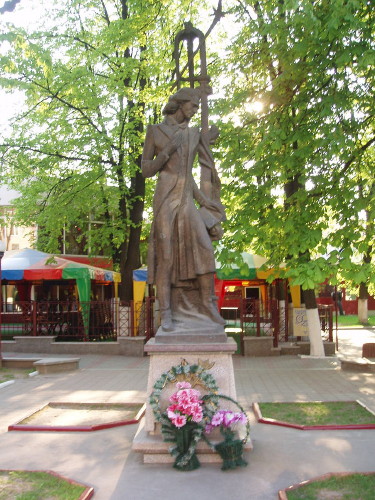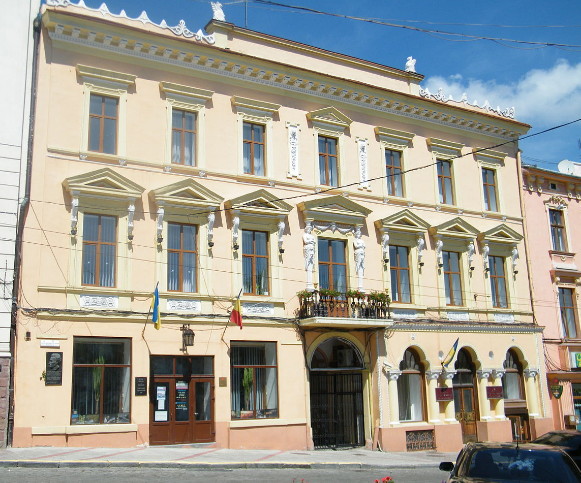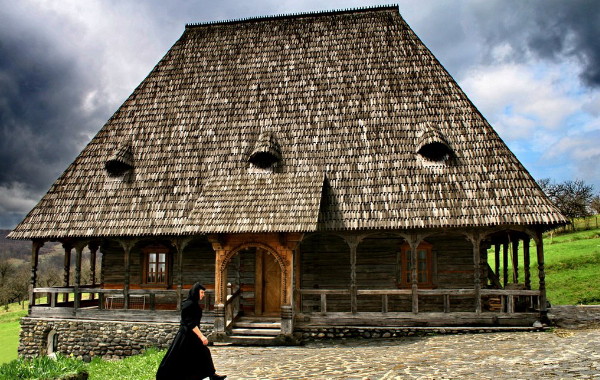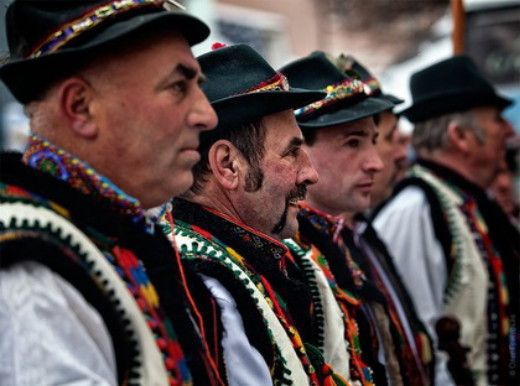Romanians
Romanians or Rumanians (Ukrainian: румуни; rumuny). The native population of Romania. In 1989 there were 459,350 ethnic Romanians in Soviet Ukraine. Approximately 377,000 others lived in Ukrainian ethnic territory outside Ukraine’s political borders. According to the 2001 census, 151,000 Romanians lived in Ukraine which constituted 0.31% of the population of Ukraine at the time.
Romanians have historically lived in the borderlands of Bukovyna, the Maramureş region, and Bessarabia (the Khotyn and Bilhorod-Dnistrovskyi regions). While Moldavia and Southern Ukraine were part of the Ottoman Empire in the 16th century, Vlachs from Moldavia began freely colonizing the underpopulated lands between the Dnister River and the Boh River in Southern Ukraine. At that time entire Moldavian villages sought refuge in Ukraine, where social conditions were better. Their number rose after Ottoman-controlled territory between the Dnister and the Boh rivers was annexed by the Russian Empire in 1791. There the tsarist government granted Moldavian landowners and officials huge estates populated by Moldavian fugitives (260,000 desiatins in Ananiv and Tyraspil counties in 1792). Some Vlachs also settled east of the Boh River.
The Vlach settlers (see Wallachians) lived on good terms with their Ukrainian neighbors. They took part in the haidamaka uprisings and were later also forced to live in the so-called military settlements in Southern Ukraine. According to the Russian census of 1897, 185,500 Romanians lived in the nine Ukrainian gubernias: 147,000 of them were in Kherson gubernia; 27,000, in Podilia gubernia; and 9,000, in Katerynoslav gubernia.
The Soviet regime distinguished between Romanians and Moldavians, although they are culturally and linguistically the same. According to the 1926 Soviet census there were 257,794 Moldavians and 1,530 Romanians in Soviet Ukraine, 172,419 of them in the Moldavian ASSR (see also Moldavian Soviet Socialist Republic). Approximately 95 percent were peasants. In interwar Romania Romanians also lived in the ethnic Ukrainian parts of Bukovyna (32,000 in 1930) and Bessarabia (36,000 in Khotyn county and 82,000 in Akkerman county in 1930).
The number of Romanians in the Ukrainian Soviet Socialist Republic increased after parts of Romanian ethnic territory in Bukovyna and the Maramureş region were annexed by the Union of Soviet Socialist Republics at the end of the Second World War. Of the 459,350 Romanians in Ukraine according to the 1989 Soviet census, 324,525 were identified as Moldavians. In 1989, as earlier, their highest concentration was in Chernivtsi oblast (100,300 Romanians and 84,500 Moldavians, mostly in Storozhynets, Hlyboka, Novoselytsia, and Sokyriany raions), where they made up 19.7 percent of the oblast’s population, and in Odesa oblast (144,500 Moldavians and 700 Romanians, mostly in Kotovsk, Ananiv, Rozdilna, Tarutyne, and Reni raions), where they made up 5.5 percent of the population. Smaller numbers lived in Transcarpathia oblast (29,500 Romanians, in Tiachiv and Rakhiv raions), Mykolaiv oblast (16,700 Moldavians), Donetsk oblast (13,300 Moldavians and 500 Romanians), Kirovohrad oblast (10,700 Moldavians, near Hruzk and Martonosha), Dnipropetrovsk oblast (6,600 Moldavians), Crimea (6,600 Moldavians), Luhansk oblast (5,800 Moldavians), and Kherson oblast (5,600 Moldavians). The number of Romanians in Ukraine outside Odesa oblast has fallen substantially from what it was in the prewar period. In 1989, 62 percent of Romanians and 78 percent of Moldavians in Ukraine gave Romanian or Moldavian as their native tongue; only 9.8 and 6.1 percent respectively gave Ukrainian, and 3.5 and 15.5 percent, Russian.
Until the last few years of Soviet rule Ukrainian citizens of Romanian descent were not allowed to have direct ties with Romania. Cultural relations with Romania were conducted through official channels by the Ukrainian Society for Friendship and Cultural Relations with Foreign Countries and the Ukrainian branch of the Romanian-Soviet Friendship Society.
The Romanian Ukrainians, particularly those in Chernivtsi oblast, have enjoyed a measure of cultural autonomy, however. In Chernivtsi oblast two CPU Oblast Committee newspapers, Zorile Bucovinei and Bucovina Sovietica, were published in Romanian; Romanian editions of the Novoselytsia, Hlyboka, and Storozhynets raion newspapers appeared from 1957; a special publishing house issued publications in Romanian; Romanian was the language of instruction in some elementary and secondary schools; and Chernivtsi University has had a department of Romanian philology. The Romanians have had their own amateur choirs and dance groups. A number of members of the Writers' Union of Ukraine, including I. Zegria, I. Kilaru, V. Levytsky, M. Liutyk, and M. Prepelytsia, wrote in Romanian and contributed to the literary journal Nistrul, published in Kishinev. A Romanian literary society headed by Levytsky has been active in Chernivtsi. In February 1990 the Social and Cultural Society of Transcarpathian Romanians was established in Uzhhorod.
BIBLIOGRAPHY
Iorga, N. Ucraina moldovenească (Iaşi 1913)
———. Românii de peste Nistru (Iaşi 1918)
Draghicesco, D. Les Roumains d'Ukraine (Paris 1919)
Guboglo, M.; et al (eds). Ukrainsko-moldavskie etnokul’turnye vzaimosviazi v period sotsializma (Kyiv 1987)
Volodymyr Kubijovyč, Arkadii Zhukovsky
[This article was updated in 2005.]
.jpg)



